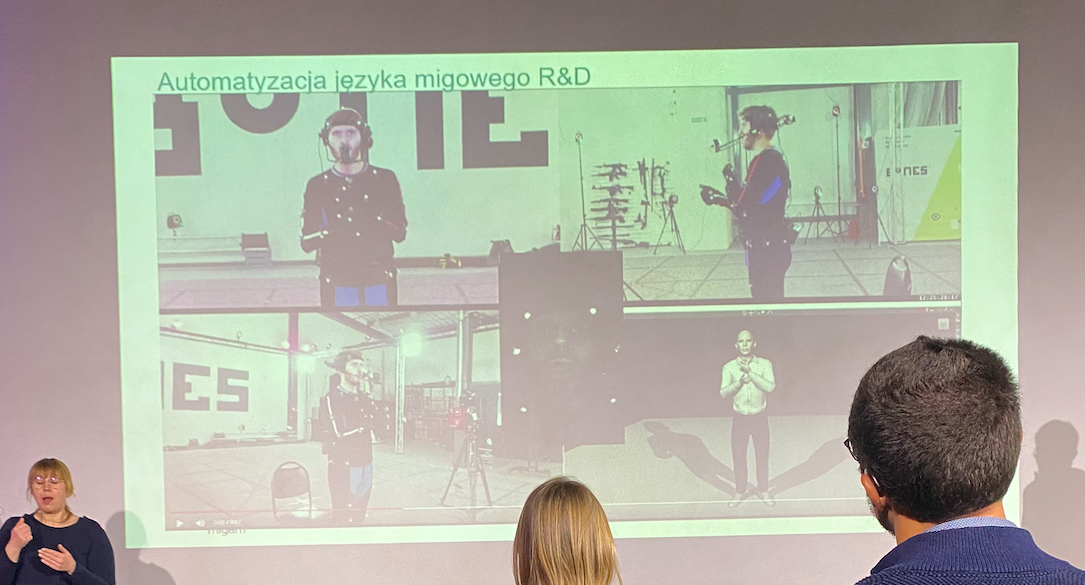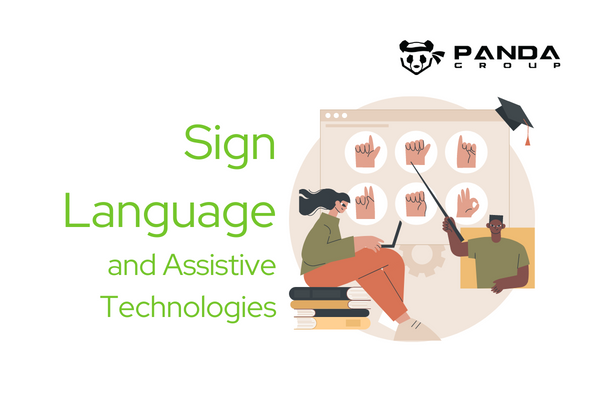At the end of February, we had a wonderful chance to be part of an event that sparked innovation and creativity in technology. Our knowledgeable speakers introduced us to Deaf Culture before demonstrating how various technologies can help meet their needs – it was a truly inspiring experience!

Attendees at the Accessibility Meetup were treated to a unique experience. Not only did they gain knowledge, but also witnessed firsthand how deaf and hearing people come together in meaningful dialogue through sign language.
Thanks to expert PSL teachers guiding us along on this journey of discovery, attendees found themselves deeply appreciative of this beautiful language’s wonders.
Today, we are living in a world where over 1.5 billion individuals have some form of hearing loss – that’s nearly one-fifth of the global population! According to WHO reports ,, 430 million suffer from disabling forms and the number is expected to rapidly increase to 700 million by the year 2050. These startling figures highlight the importance for everyone to familiarize themselves with this issue.
Can culture be… deaf?
Beata Iwanicka PhD, an esteemed scientist from Poznań University and coach to teachers on how best to work with Deaf populations, presented a unique insight into the culture of those who use Sign Language as their main mode of communication.
Sign Language systems differ from country to country but they are natural languages that establish a culture and its creations. Each country has its own Sign Language. There is even British and American Sign Language. It is worth noting that for Polish Sign Language users Polish language is a foreign one. Sign language has its own way of expression but also structure and composition that varies from the language hearing people use.
Deafness is a disability that is not visible at the first sight. And may cause exclusive practices such as hearing people to assume that if people do not hear they can read out-of-mouth movements or the texts and though the problem is solved. It’s not that obvious as not all Deaf people can practice mouth reading and not all audible content is accompanied by the text version e.g. subtitles.
There is also social resistance to Sign Language users, especially on digital devices when they take a large part of the screen. And the space for the translation is crucial here as too small a translator makes the translation invisible to the hard of hearing.
Deaf culture is quickly permeating social boundaries, providing a valuable opportunity for both hearing and deaf people to broaden their understanding of communication. By increasing awareness around the needs of disabled persons as well as fostering compassion amongst all parties involved, Deaf culture offers an alternative way for us to see the world.
Technical support for the Deaf
Supportive technologies exist and make Deafs participate in society, learn at schools and universities and work at the same level as hearing people. First and foremost are hearing aids, implants, smartwatches and smartphones with accessibility features are more and more available.
There are also developed Facility Management Systems to enable Deaf people to participate in cultural, educational, and professional activities. It is possible to use technology to connect an induction loop to hearing aids via Bluetooth connection.
During the pandemic when schools worked remotely using MS Teams, Deaf could connect their hearing aids to the computer with Bluetooth, and also used subtitles to participate fully in lectures and classes.
Paradoxically, remote work was much easier for non-hearing people than offline education. Technology really supports their everyday education and professional lives, as well as leisure time, for instance, there are Vibrating Suits that enable Deaf people to hear music.
Enough of being deaf for the needs of the Deaf!
Paweł Potakowski from migam.org presented examples of how new technologies supporting accessibility can be business-oriented and sensitive at the same time. Migam is a translation service for individuals and various institutions enabling effective communication and understanding between hearing and deaf people.
It not only creates workplaces and activates Deaf people in translations and other workspaces but also researches and develops AI technologies to create avatars and AI-based translations to be available in the coming future.
Migam.org is creating a more inclusive workplace and activating deaf people through translation work and also other professional activities with technical assistance. Furthermore, they are investing in the future with AI-based technologies to automate sign language.

In 2021 Allegro, the polish biggest online marketplace, launched a contact channel for Deaf customers using the Migam translator.
It enables Deaf customers to communicate in real-time while shopping with Polish Sign Language translators.
Market potential and changes
Institutions and entrepreneurs are recognizing the financial benefits of catering to disabled customers, driven by awareness about their untapped market potential as well as legislation such as the European Accessibility Act.
The European Accessibility Act is an ambitious directive that seeks to streamline cross-border commerce by making it easier for businesses across the EU to provide accessible products and services. This initiative promises greater economic efficiency through common regulations on access, allowing companies to reduce their expenses significantly.
Conclusion
It isn’t by accident that we meet regularly at Snowdog to explore accessibility issues for various disabilities perspectives. It’s very much up to the experts developing technology to support people in various situations. It empowers our work and motivates us strongly when we realize that this way we can change the world for the better.
Having a diverse set of perspectives can be an invaluable resource when developing or marketing products and services. Attending events with people from different backgrounds is one way to scale your understanding and become more creative, which can lead to innovative ideas that benefit both you and the customer experience. Embracing others’ viewpoints opens up possibilities for business growth – giving it room to move in new directions!
If you are interested in other Accessibility issues please check out the following articles:
Benefits and best practices for eCommerce website accessibility
III Accessibility Day Recap – Sight Disabilities
Poznań Accessibility Meetup – Assistive technologies – Eye-tracking


 (No Ratings Yet)
(No Ratings Yet)